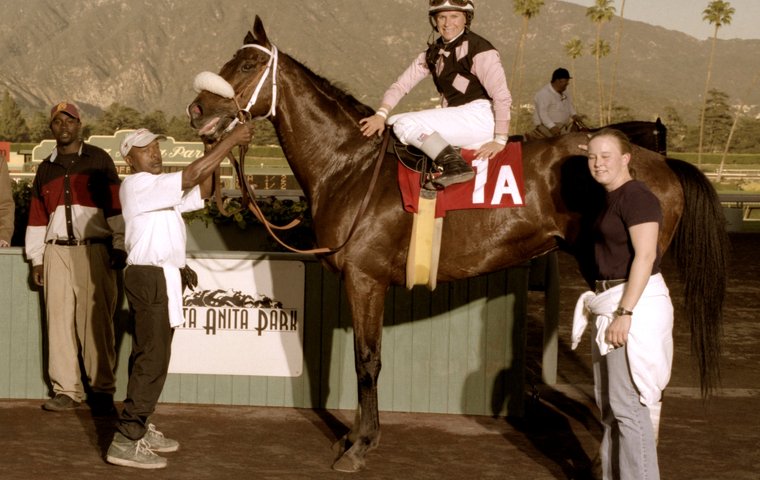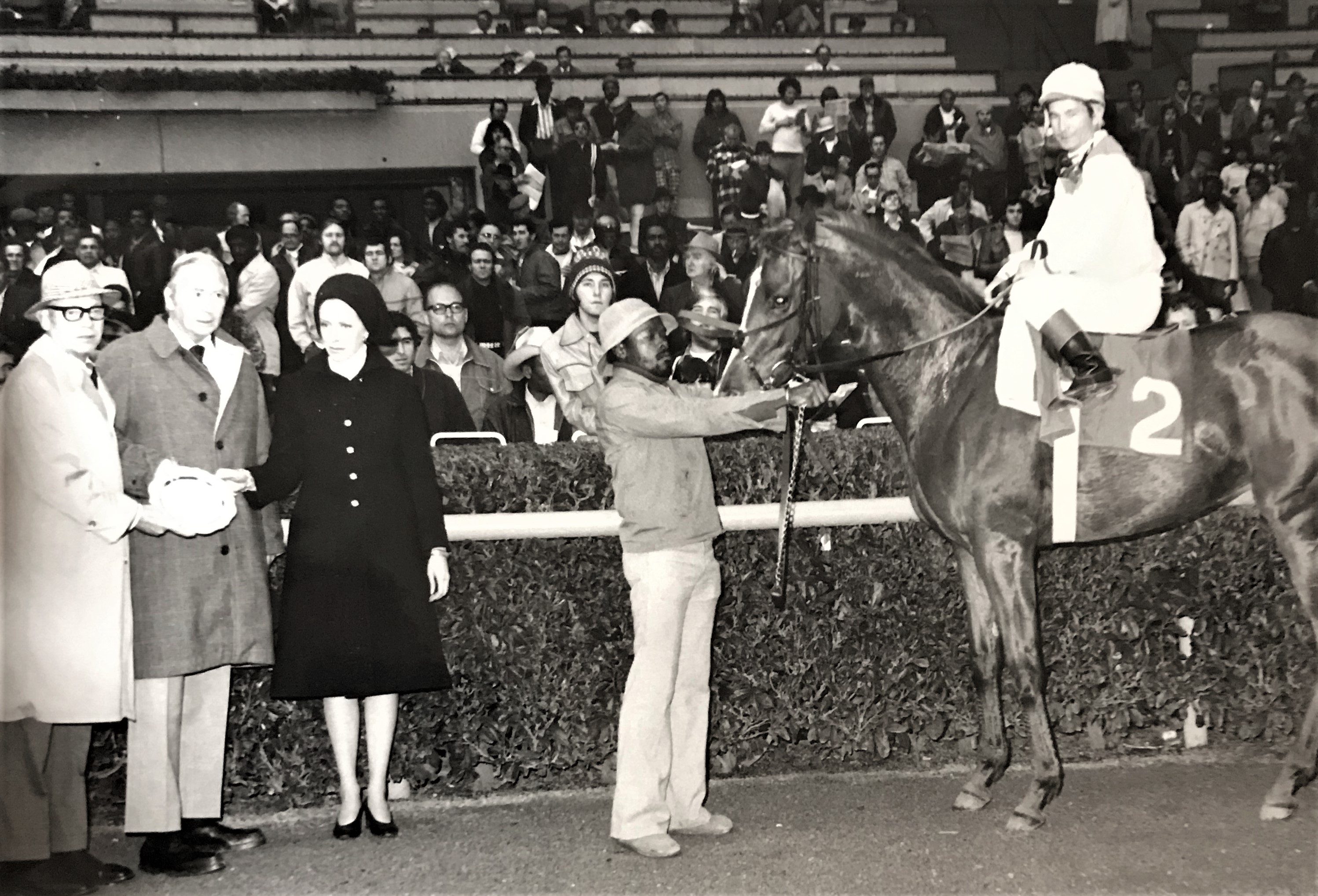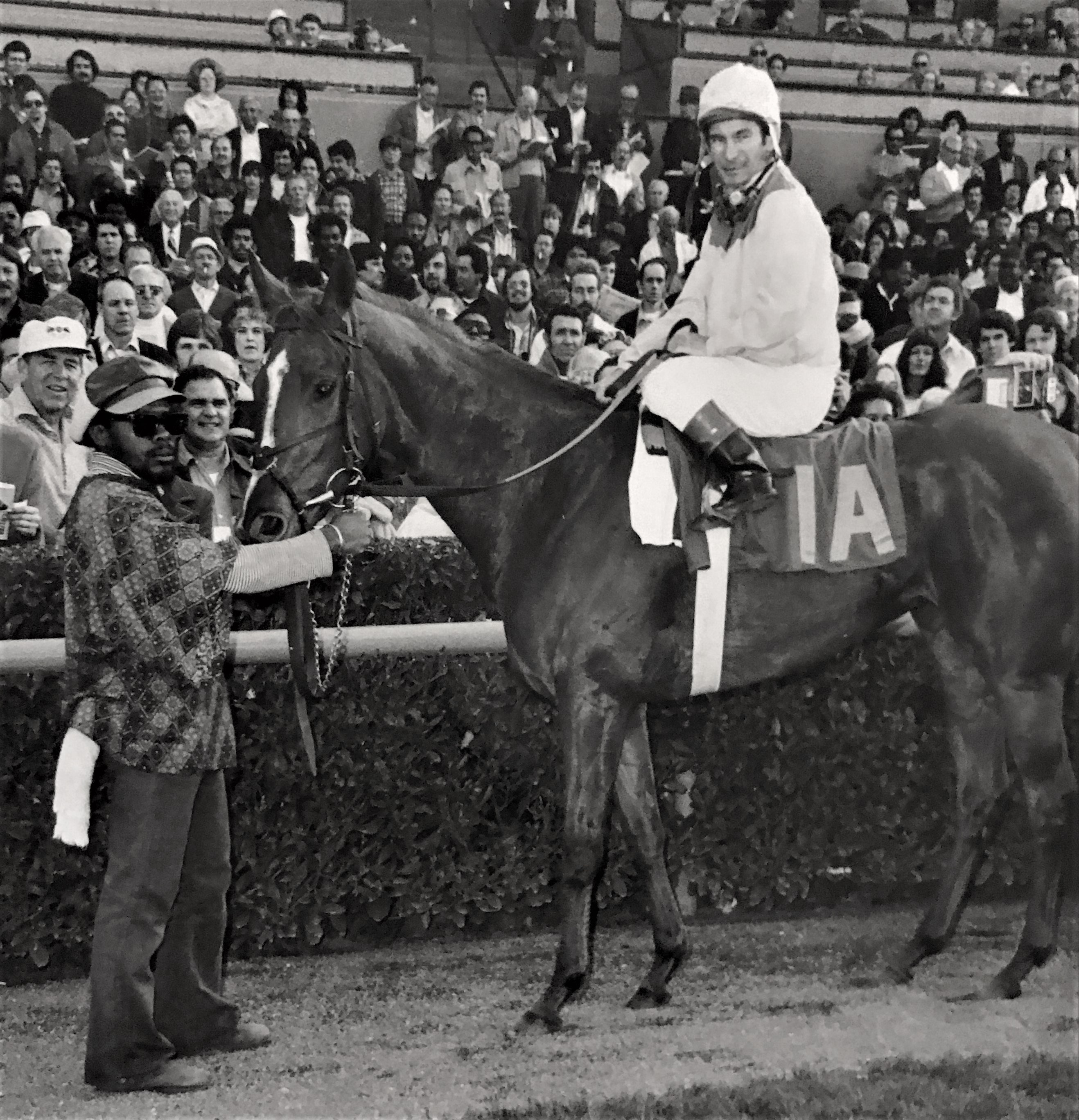
One of life’s great pleasures is the discovery of a book chock-full of vivid racing history, with stories splashed across a broad landscape of cultural evolution, fast horses, and characters far larger than life.
Time spent with such a volume is never wasted and always nourishing. The pages practically turn themselves. Such immersion requires commitment, however. So, for those who might shy away from the heavy lifting of A History of Horse Racing in America, by Walter Robertson, or the biography of Henry Cecil by Brough Scott, allow this fellow traveler to suggest a happy alternative.
Come share a conversation with Mr John Flakes.
With Flakes you get a panorama of American racing history, from the mid-20th century of the segregated south to the slightly more enlightened metropolitan racing centers of New York and Los Angeles, along with a collection of points in between with names like Assiniboia Downs, Sunshine Park, Cahokia Downs, and Agua Caliente.
You learn of good horses he knew inside and out, from the ground up, as the groom for stables trained by such household names as Charlie Whittingham, David Whiteley, Lefty Nickerson, and John Shirreffs. You get access to a photographic memory of great races run by great horses rubbed by a generation of black stable hands who gave the sport a sturdy backbone.
Such a conversation took place recently at Los Alamitos Racecourse in Orange County, California, where Flakes, 77, is caring for a couple of horses for a friend. He chuckled at the thought that it was the last day of Black History Month when the interview would not be published until early March, the obvious argument being that the history of Thoroughbred racing is not bound by the calendar, and the life of John Flakes transcends the limits of designated attention spans.
Sitting outside the stable gate, we got the important question out of the way up front: When people ask for John Flakes they say, ‘Oh, you mean Short Man?’ But in a world populated by jockeys and exercise riders, his 5-foot-5 hardly qualifies.
“We all had names in the old days, mostly got them playing dice,” Flakes said. “There was Jam Biscuit, Nice Willy, Ned Walker, Red Dennis, Big John, Little John, Old Man John, Stutterin’ John – so many Johns we had to give ‘em different names.
“They started calling me Short Man when they found out I could play basketball,” Flakes said. “I could dribble with both hands, jump, and even touch the rim every once in a while if I got a clear shot at it. I was the black Pete Maravich.”
(There will be a brief pause for those who would like click here to appreciate Short Man’s historical reference.)
“Most of the guys back in my hometown were tall, and they were good,” Flakes continued. “I couldn’t mix it up with them. But if I stuck with my friends, I did fine. We had a lot of fun playing those charity basketball games at Del Mar, with Bill Shoemaker and Burt Bacharach heading the teams. And I never got mad if I lost, because losing is part of winning.”
A partition in the kitchen
Flakes was born on August 5, 1943, in the town of McCrory, in eastern Arkansas, halfway between Little Rock and Memphis, Tennessee. There were about a thousand people living in McCrory at the time. John was the second oldest of 12 children born to John Flakes Sr, a pig farmer and sharecropper, and his wife, Maddie Bernice, who died when John was 19.
The hometown to which Flakes referred was the village of Centreville, Illinois, a suburb of East St Louis, where the family moved in the late 1940s. A once thriving city on the Mississippi River, East St Louis was still a going concern through the 1950s before industrial flight began to take its toll. More recently, East St Louis has become known for its crime and decay, while in a 2018 survey by USA Today, little Centreville was tagged with the label of the poorest small town in America.
Fortunately, that’s not how Flakes remembers it from the 1950s, when he was first drawn to the racetrack at Fairmount Park, 14 miles up the road in Collinsville, where he could walk hots for 50 cents a head. He was 12.
“It was like a step up from Arkansas,” Flakes said, though not a big step. “At Fairmount, we had white and colored water fountains. The kitchen had a partition – whites ate on one side, colored on the other. We had some real rednecks on the track, guys up from Texas and Oklahoma. The state came in and tore down the partition, around 1956.
‘We didn’t make many waves’
“I think I tried to rise above it, because a lot of my friends were white cowboys,” Flakes said. “But we didn’t make many waves. We stayed out of the way, because we knew our place. We shouldn’t’ve had a ‘place’, I know, but that’s the way it was. Then, when I came to California, when I was 21, it was different. I loved it. I felt truly safe. It was paradise. Some barns had all whites, some had all blacks, and it didn’t make any difference.”
Grooms are known by the company they keep, in terms of trainers and their best horses. After spells with people like Whittingham, Nickerson, Paul Johnson, and Steve Ippolito, Flakes landed a job with David Whiteley, son of the revered Frank Whiteley, who was at Santa Anita the winter of 1975.
“I was out here freelancing, chasing girls, listening to loud music when I went with David, and that was a tough job,” Flakes said. “He was a stickler. But he gave me a couple of good horses to groom. I rubbed Swamp Nurse, Sarsar, and Forage.”
All three belonged to William Haggin Perry, whose Thoroughbred bloodlines intermingled with the cream of the Claiborne Farm DNA. Forage, a son of Herbager, was a solid middle-distance horse who was past his prime by the time Flakes got him. Swamp Nurse, a daughter of Dr Fager, had more pedigree than ability. Sarsar, on the other hand, would have been the best filly of her generation had it not been for a lass back East named Ruffian, trained by David’s father.

“She was a beautiful filly, but hard, and man she was mean,” Flakes said of Sarsar. “She won the Santa Anita fillies triple crown.”
Flakes was talking about Sarsar’s sweep of three significant races for the division that winter of ‘75. The daughter of Damascus won the Pasadena Stakes at 6 furlongs, the La Centinela Stakes at 6½ furlongs, and the Santa Susana Stakes at a mile and one-sixteenth, with Flakes posing proudly at her head in winner’s circle photos, stylishly garbed in his dashiki and bell bottoms. After the meet, Flakes followed Sarsar and the Whiteley barn back to New York, where his filly promptly won the Prioress Stakes at Aqueduct.
“We were supposed to run against Ruffian in New York, in that mile race,” Flakes said. “Frank told David, ‘You can’t run your filly against my filly.’ He didn’t give no reason. So David ran her in the Withers against the colts.”
On May 10, 1975, Ruffian walked her beat to win the Acorn by 8¼ lengths. Two weeks later, Sarsar faced a dozen colts in the Withers and won by two lengths as the 3/2 choice. Bill Shoemaker, Sarsar’s rider, nailed down his place for all time in the Short Man Hall of Fame.

“Shoemaker was the greatest ever,” Flakes said. “And he was a gentleman. He didn’t say much, but when he said something you listened.
“That first time we ran Sarsar back there, he had her sitting behind horses, sitting behind horses, then let her run the last eighth of a mile to beat those fillies easy,” Flakes said. “When he brought her back to the winner’s circle there was a guy up in the crowd yelling, ‘Shoemaker, you bum, why didn’t you let her run? She was 1/5. Shoulda won by ten!’ But you know Shoemaker. He was thinking about the next race. He just shrugged and said, ‘Sometimes they boo ya, sometimes they don’t.’
“In the Withers, they went the first three-quarters in eight and change,” Flakes said. “Shoe pulled her out and went whoosh! Win easy. In the winner’s circle we hear, ‘Way to go, Shoe! Great ride!’ Shoe looks at me and says, ‘Same guy.’”
Flakes got to know Shoemaker because he had worked for Charlie Whittingham, and Charlie was Shoemaker’s main patron. With Whittingham, Flakes found himself alongside the cream of Southern California’s black hands, among them Charles Clay, Eugene ‘Snake’ McDaniel, Huey Barnes, the Robertson boys, and George Lambert, son of Whittingham’s longtime foreman, Ed Lambert.
“They definitely taught you the right way,” Flakes said. “They would be hard on you. But if you looked around, it was okay, because those guys had the horses who could run, and they make the stakes money. We weren’t making much otherwise. When I came out here the first time with Bobby Wingfield, I was making $100 a week grooming three horses.”
Flakes found himself suited to the profession.
“I got on horses a couple of times, but I didn’t like it,” Flakes said. “What I wanted was to be with horses on the ground. I was almost like a natural groom. I could slap a bandage on, wind blowing, rocking on the van, I put that bandage on. It wouldn’t move. It was my job to keep them level-headed and quiet. Keep them from being nervous and console them.”
Now approaching 60 years on the racetrack, Flakes looks around and doesn’t see many people like him anymore. He’s not surprised.
“Most of the guys on the track, the trainers’ sons become trainers, the jockeys’ sons become jockeys, but the grooms’ sons, all the black guys, when they raised their families they wouldn’t let them work on the track,” he said. “They sent them to school to get better jobs. Better stability.”
Flakes has a daughter, Jetta Vaughns, who earned a college degree but gravitated back to the Thoroughbred world. She currently works for a veterinary clinic in Lexington and calls her father twice a day.
“He’ll say, ‘Thanks for calling, but I’m on my bike right now,’” Vaughns said with a laugh. “He’s a hard man to keep down.”
“I’ve seen a lot of things, good and bad,” Flakes said. “Some of my partners got hooked on dope, overdosed. I walked many a guy around to revive him. I was kind of like a big brother to the younger guys. And the older guys who couldn’t read or write, they’d get me to write them a letter sending money home.”
Stubborn memories
Flakes won a round with prostate cancer a few years ago and must be careful of a dicey kidney. He had wrenched his ankle walking his bike back to the track the day before after a tire went flat. Nothing seemed to heal up quite as fast as it once did.
“I’m mostly retired now,” he said. “You have to be physically fit and mentally fit to take care of horses. You’re not just doing it for an hour a day. You’ve got to take care of them all day.
“Like this filly I’ve got right now,” Flakes said. “She’s always pawing at her straw. Paw, paw, paw. So I sit beside her all morning until she goes to the track and comes back. Then I’ll sit with her again ‘til she calms down.”
It was easy to picture Flakes whispering sweet nothings to the edgy Sarsar, or soothing the aggressive Whittingham grass runner Bold Tropic, or coddling the nifty little stakes winner Alyzig for Kristin Mulhall. All those horses, all those years, stubborn memories that refused to fade. It was pushing 4 pm, though, and duty called.
“I’ve got to go back down there now, feed that filly and sit with her for a while to calm her down,” Flakes said. “Because that’s what you’ve got to do. You’ve got to be there.”


